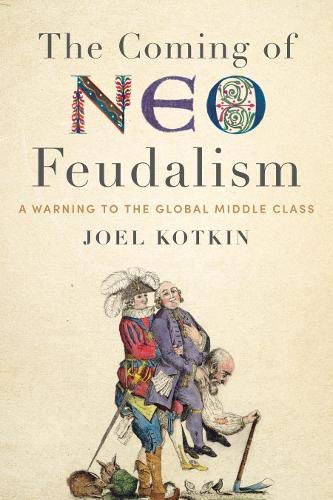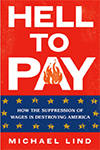
It’s easy to dismiss Donald Trump’s haphazard tariff barrage as silly and self-defeating, especially after so many days of global market turmoil. But critics among liberal Democrats and Republican free traders still need to address the overriding goal behind the seeming madness. The key strategic objective of Trump’s approach is simple: restoring American industrial power. Opponents of the US president ignore this at their peril.
It is true that the American economy continues to outperform those of Europe and the UK, especially in terms of tech, communications and finance. Yet the situation for blue-collar professions and working-class communities has not improved with the pace of globalisation. Between 2004 and 2017, the US share of world manufacturing shrank from 15 to 10 per cent. Since 2000, notes an Economic Policy Institute study, China’s export barrage has cost as many as 3.7million US jobs.
The ‘China shock’ is not just an American but a global phenomenon. Today, China boasts nearly as many factory exports as the US, Japan and Germany combined. Overall, Europe’s industrial sector continues to decline, losing 850,000 manufacturing jobs between 2019 and 2024. Germany could lose around half of its 800,000 auto jobs to Chinese competition by 2030.
To be sure, the early stages of globalisation reaped enormous benefits, both for Western consumers and for developing countries. But China’s admission into the World Trade Organisation in 2000 changed the dynamic. Here was a huge country, with enormous human capital, which adopted a highly mercantilist drive to dominate industries, first at the lower end of manufacturing and then, increasingly, in the most sophisticated sectors.
Wall Street bankers and tech oligarchs may be untroubled by the consequences of Beijing’s mercantilism, as they have little contact with America’s working and middle classes. The poorest have increasingly been forced to subsist on expanding welfare benefits which, in turn, subsidise the affluent for whom they work for a pittance as nannies, gardeners and day labourers.
For the working classes, manufacturing and related fields, like energy and logistics, represent an escape from economic marginalisation. Overall, manufacturing jobs pay $54,000 annually on average, well above the $47,000 average in services. These jobs also come with health insurance and steady employment.
Geography plays a role here. Apologists for the outgoing trade regime often ignore that its impact was felt most acutely in particular regions, like the American Midwest. Researchers John Russo and Sherry Linkon describe how the closure of a steel mill in Youngstown, Ohio – the first of a wave of closures in the region – undermined the sense of worth and optimism among residents. Many can still recall better days, when employment was high, jobs paid well, workers were protected by strong unions and industrial labour provided a source of pride – not only because it produced tangible goods, but also because it was recognised as challenging, dangerous and important.
Similar tragedies have occurred all over the West, away from the elite college towns, leafy suburbs and urban haunts of the upper classes. You can see this in places like England’s Midlands. The UK, the birthplace of the Industrial Revolution, now produces less wealth from manufacturing than countries like Mexico, Russia and Taiwan. Deindustrialisation has also blighted much of the former East Germany and Japan’s Kansai region.
Read the rest of this piece: Spiked.
Joel Kotkin is the author of The Coming of Neo-Feudalism: A Warning to the Global Middle Class. He is the Roger Hobbs Presidential Fellow in Urban Futures at Chapman University and and directs the Center for Demographics and Policy there. He is Senior Research Fellow at the Civitas Institute at the University of Texas in Austin. Learn more at joelkotkin.com and follow him on Twitter @joelkotkin.
Photo: Official White House Photo by Joyce N. Boghosian, via Flickr, in Public Domain.












